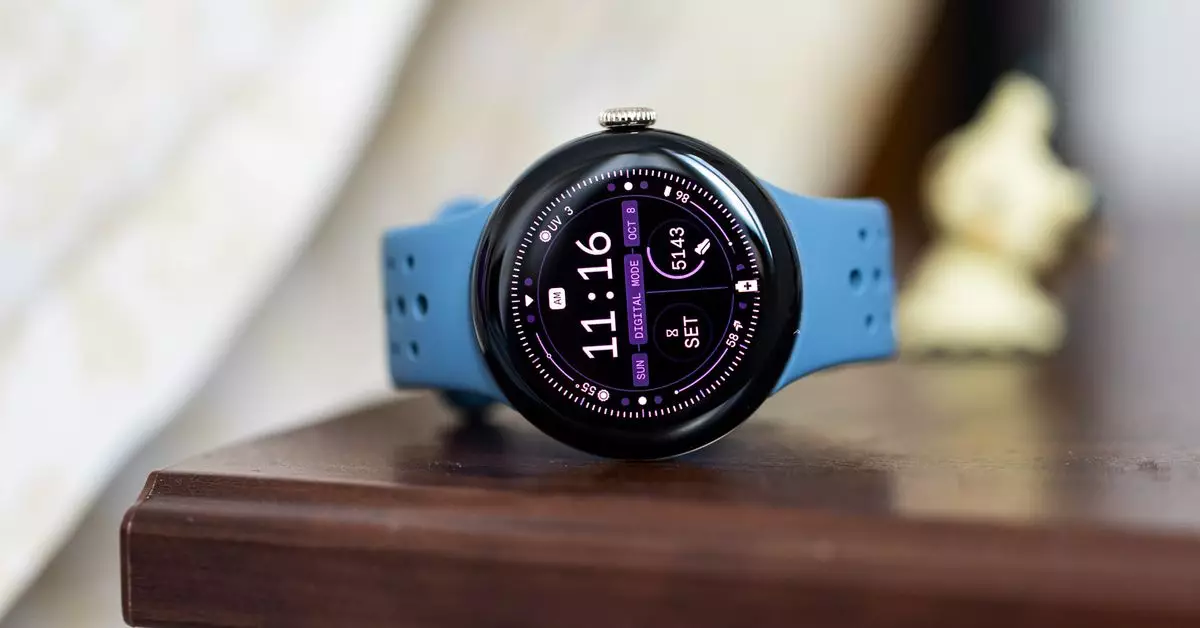In the ever-evolving world of wearable technology, smartwatches have secured a vital place in the lives of tech enthusiasts and casual users alike. Among the myriad of options, Google’s Pixel Watch series has garnered attention for its innovation and design. The recently announced Pixel Watch 3 boasts significant advancements, yet the Pixel Watch 2 remains a compelling choice, especially given its current market pricing. This article examines the strengths and potential drawbacks of both models, aiding consumers in making an informed purchasing decision.
The Pixel Watch 3 is a testament to Google’s commitment to refining its wearable lineup. With a larger and more brilliant display, this new model charms users at first glance. The newly introduced 44mm size caters to those desiring more screen real estate without going overboard. Among the standout features is the AI-generated workout suggestions, which adjust to an individual’s fitness level and preferences, enhancing the workout experience.
Additionally, the offline Google Maps feature is a game-changer for those frequently on the go, negating the need for constant connectivity. However, it is essential to consider that these impressive innovations come at a steep price of $350. For many consumers, the question arises: is the upgrade worth it, or does the Pixel Watch 2 still hold its ground?
The Enduring Charm of the Pixel Watch 2
Despite being an older model, the Pixel Watch 2 has not lost its charm. Most notably, the price point of $224, a current reduction of $26, makes it an attractive option for budget-conscious shoppers. The 41mm design has a sleek aesthetic, complemented by a display that remains competitive with its successor. Interestingly, the watch’s display area is only about 10% smaller than the Watch 3, a factor that may go unnoticed during daily use.
Both models are powered by the Qualcomm Snapdragon Wear W5 Gen 1 chip, ensuring that performance levels remain similar. Although the Pixel Watch 2 lacks an ultra-wideband chip, the core functionalities—notifications, health tracking, and app compatibility—are robust. Its battery life is another highlight, boasting about 24 hours of usage, making it a reliable companion throughout a busy day.
While the Pixel Watch 3 introduces significant enhancements, potential buyers should weigh what they will actually miss by choosing the older Pixel Watch 2. Most of the essential features, such as health monitoring capabilities, compatibility with Wear OS 5, and an array of safety tools, are preserved in the second-generation model. The loss of the ultra-bright screen and the advanced workout tracking options may deter some, but many users may find that the essentials are more than sufficient for their needs.
For those focused primarily on functionality rather than cutting-edge features, the Pixel Watch 2 is hard to overlook. Furthermore, as Wear OS continuously receives updates, many features initially exclusive to the Pixel Watch 3 may eventually find their way to the second iteration.
The current pricing landscape undoubtedly tilts the scales in favor of the Pixel Watch 2. Both Amazon and Best Buy are offering significant discounts, making it unclear whether consumers should prioritize the latest model. If the new features on the Pixel Watch 3 do not significantly enhance your daily life, the improvements may not justify the extra expense.
This scenario emphasizes the broader trend seen in the tech market, where last-generation products can still provide tremendous value long after newer versions debut. Consumers must assess their individual needs against their budget, making educated choices based on personal priorities.
Deciding between the Pixel Watch 2 and the Pixel Watch 3 boils down to individual preferences and requirements. If cutting-edge functionalities and the most up-to-date design are priorities, then the Pixel Watch 3 might justify its price tag. Conversely, for those who value a stylish, well-functioning smartwatch without the latest bells and whistles, the Pixel Watch 2 represents an excellent choice.
Ultimately, as technology continues to advance, wearables like smartwatches provide essential tools for enhancing daily experiences. Each user’s needs are unique, and understanding the strengths of each option can lead to a fulfilling purchase that aligns perfectly with personal lifestyle choices. It is wiser to look for balance—in features, design, and price—ensuring that you are investing in the right product for your daily life.


Leave a Reply